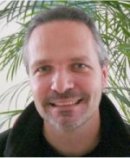|
Plenary Lecture
The Influence of Musculoskeletal Properties and Neural
Control on the Stability of Human Motion

Professor Heiko Wagner
University of Muenster
Motion Science
Horstmarer Landweg 62b
D-48149 Muenster
Germany
E-Mail:
heiko.wagner@uni-muenster.de
Abstract:
Several models have been developed to understand the
motor control system of human and animal locomotion.
Some of these models are based on psychological
backgrounds and some are physiologically inspired. With
the present talk a biomechanical model will be
introduced which can be used to simulate some aspects of
musculoskeletal motion. Especially the stability of such
systems should be analyzed with the model.
Considering the large degree of freedom as well as the
complexity of our locomotion system it seems to be
hopeless to control bipedal walking. Internal and
external disturbances increase these difficulties. One
strategy to cope with disturbances is to change
behavior, i.e. to change the motor program. But thinking
about dynamic movements in sports one might imagine the
enormous dataflow and the high demands on the accuracy,
which are necessary to cope with all variations via the
central nervous system.
Therefore it seems to be advantageous to use an
'intelligent' neuro-mechanical system which unburdens
the central nervous system. The mechanical system itself
should be stable with respect to small perturbations;
this intrinsic property of musculoskeletal systems was
named self-stability. On the other hand the properties
of the neural network within the spinal column itself
may support the stabilization of cyclic and acyclic
motions.
To discuss stability in a mathematical sense we use the
framework of dynamical systems and apply this to
biological musculoskeletal systems. To investigate the
self-stabilizing properties of single muscle
contractions, quick-release contractions can be used as
a simple perturbation test. As a next step, it is
necessary to analyze the interaction between muscle
properties and the geometry of a joint. Here, we are
interested in the stabilizing properties of muscles and
the skeleton in general.
To discuss the interaction of the neural network within
the spinal column we introduce a simple model, which can
describe the function of so called spinal pattern
generators. These spinal pattern generators are able to
generate complex muscular activation patterns, based on
simple central commands and feedback from proprioceptive
sensors.
Brief Biography of the Speaker:
Dr. Heiko Wagner, is a professor for Biomechanics and
Motor Control, at the University of Muenster, Germany,
since 2006. He took his PhD in physics at the University
of Frankfurt, Department of Theoretical Physics, Germany
on 2000, and his habilitation in motion science at the
University of Jena, Department of Behavioural Sciences,
Germany on 2004.
Since 1996 he worked as a academic assistant at the
Institute of Sportscience, Science of Motion, Universtiy
of Jena under supervision of Professor Reinhard Blickhan.
His current research interest is the biomechanical
analysis of how humans and animals are able to perform
highly accurate and stable motions. He developed
musculoskeletal models based on biomechanical
time-invariant properties, using experimental and
analytical methods in biomechanics and nonlinear
dynamics.
The focus of his work is to analyse the self-stabilising
properties of the musculoskeletal system in human and
animal locomotion. Self-stability is based on both the
mechanical properties and the learned movement patterns
of the humans and animals. Therefore, there is a deep
connection between the motor control system, which
includes reflexes and inter-muscular co-ordination, and
the biomechanics of humans and animals. While trying to
understand the biomechanics of motor control, it is
necessary to bridge the gap between different scientific
fields, i.e. mathematics, physics, biology,
biomechanics, medicine and physiotherapy, psychology,
robotic engineering and others. Furthermore, we are
investigating the kinetics and motor control of patients
with chronic back pain.
|